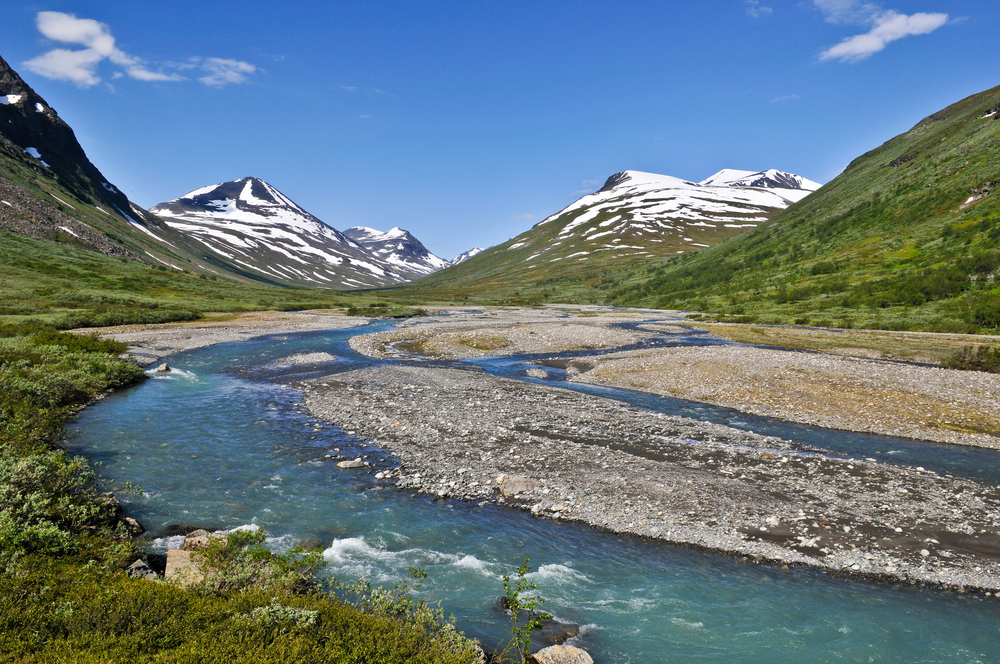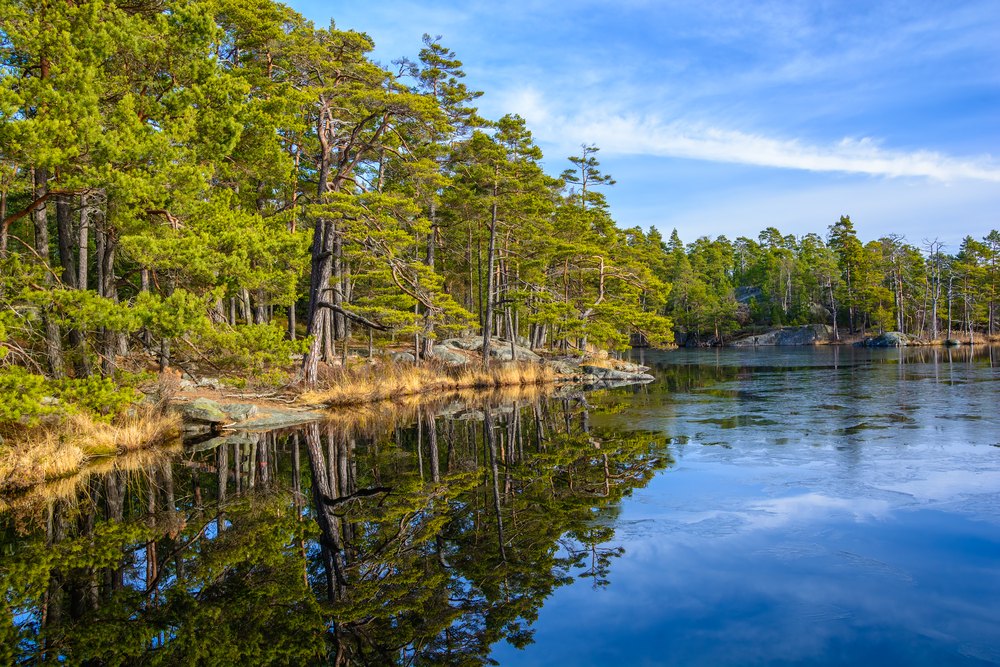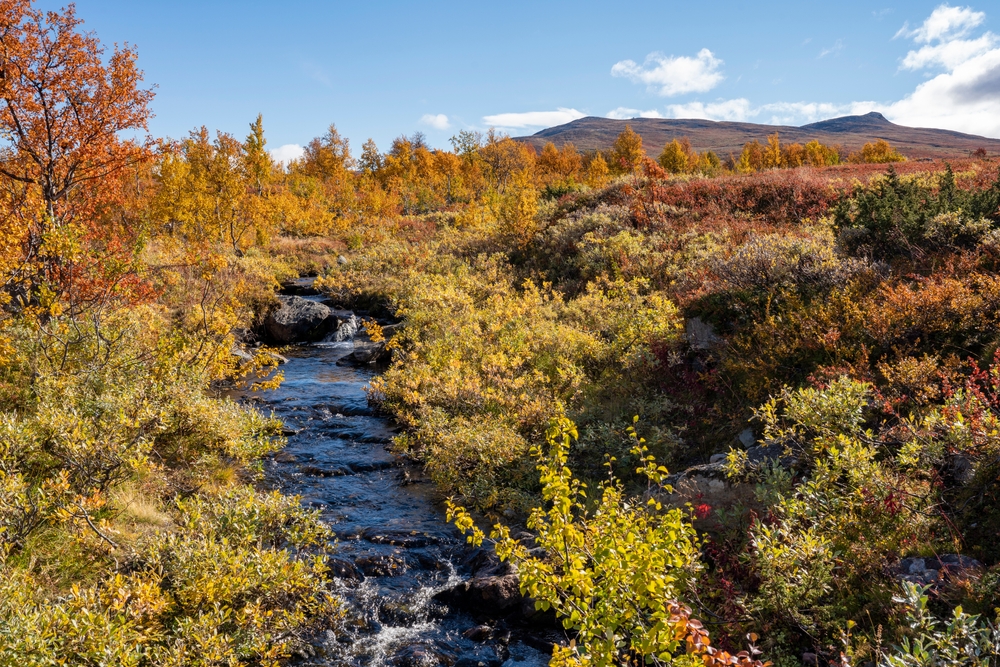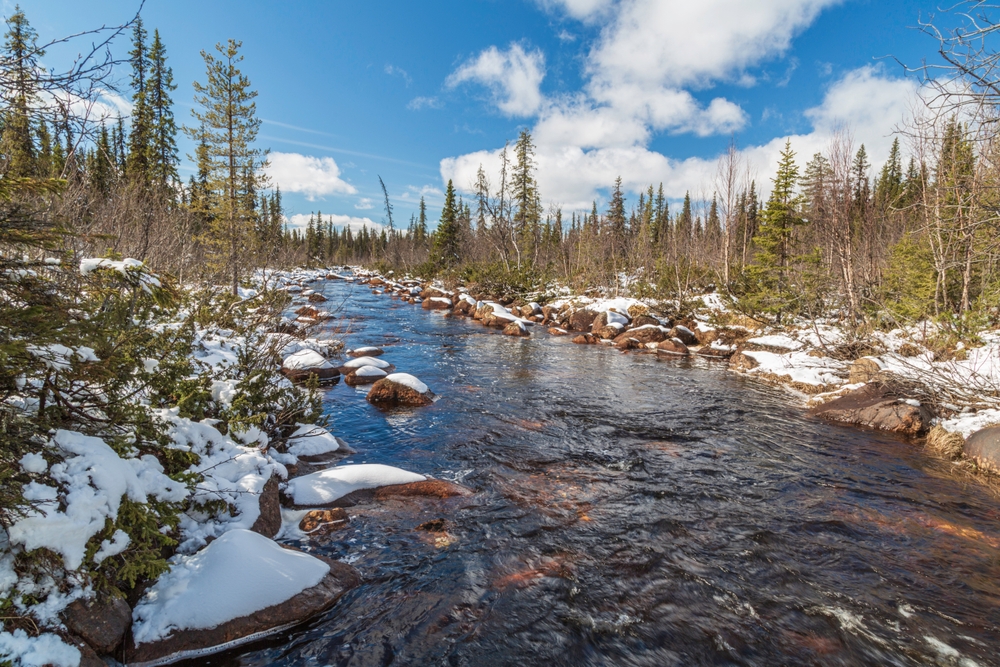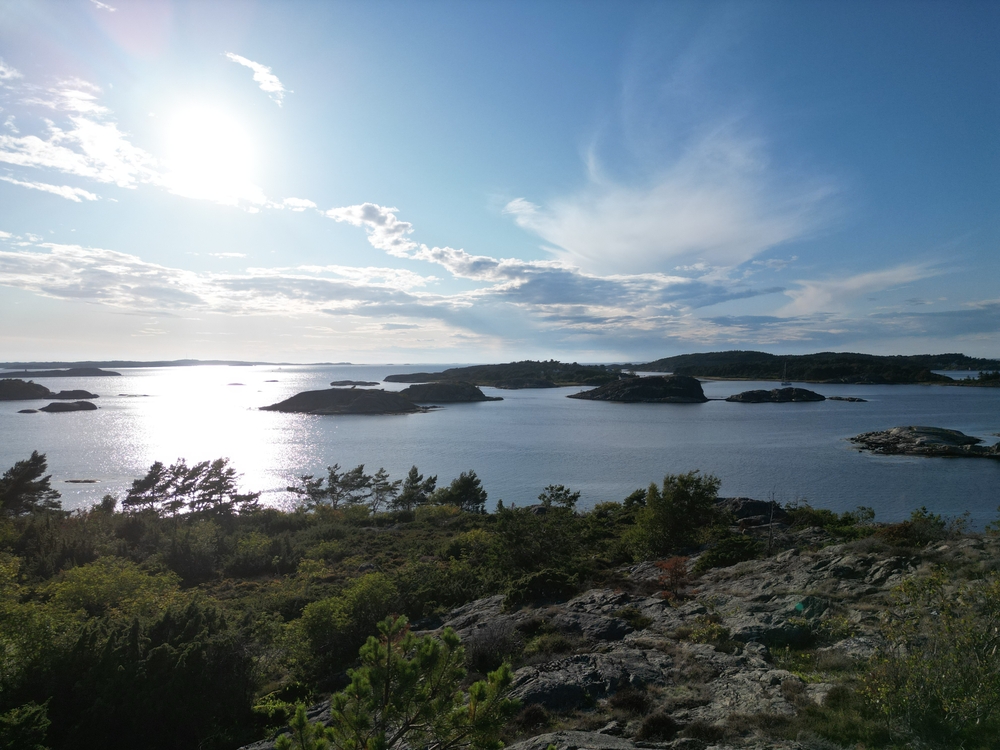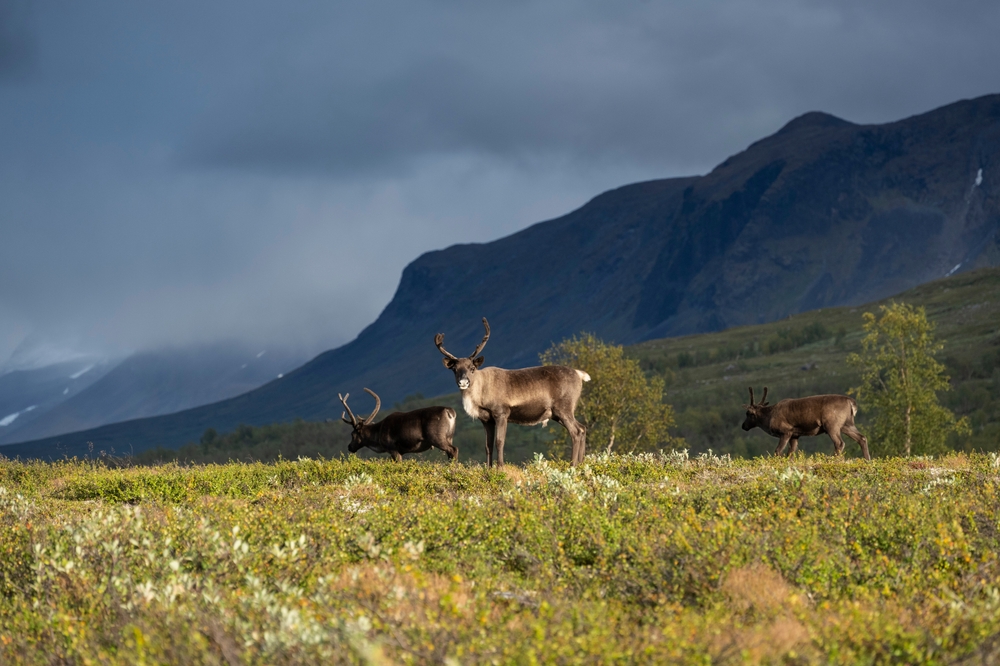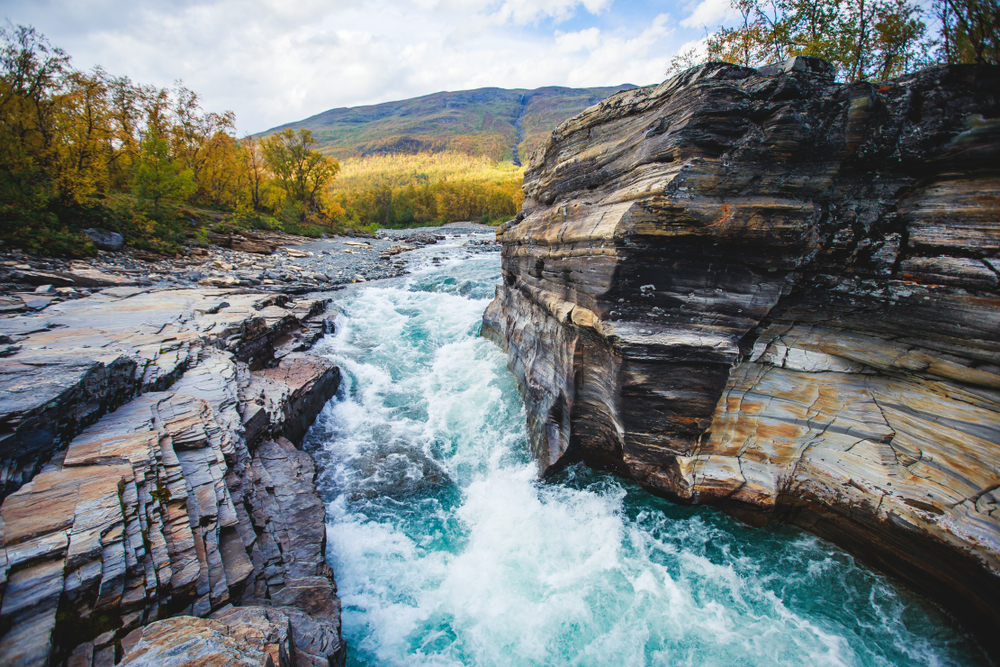Skuleskogen Overview
Skuleskogen National Park, known as Skuleskogens Nationalpark in Swedish, is located in Västernorrland County in northeastern Sweden.
Covering approximately 11.5 square miles (30 square kilometers), this park is a striking example of Sweden’s High Coast region, a UNESCO World Heritage Site known for its dramatic post-glacial uplift.
The park is situated along the Gulf of Bothnia and offers visitors a breathtaking mix of coastal cliffs, deep forests, and rugged terrain that showcases the effects of glaciation over thousands of years.
The landscape of Skuleskogen National Park is dominated by ancient forests, steep cliffs, and striking rock formations. One of the most well-known features of the park is Slåttdalskrevan, a massive crevice carved into the bedrock, measuring about 200 feet (40 meters) deep and 23 feet (7 meters) wide.
This natural formation provides a dramatic hiking experience, allowing visitors to walk through its narrow passage with towering rock walls on either side. The park also features coastal views over the Baltic Sea, where high cliffs plunge dramatically into the water.
The forests are primarily made up of spruce and pine, with patches of birch and aspen adding diversity to the landscape. The ancient trees, some over 200 years old, create a deep, almost mystical atmosphere, particularly when the fog rolls in from the sea.
Skuleskogen National Park is home to a variety of wildlife, offering visitors a chance to encounter some of Sweden’s iconic species. Among the mammals, moose are the most frequently spotted, often seen grazing in forest clearings or moving through the trees. Red foxes, lynxes, and roe deer also inhabit the area, although the elusive lynx is rarely seen.
The park’s rich birdlife includes species such as the black woodpecker, capercaillie, and the white-tailed eagle, which can often be seen soaring over the coastline. Smaller songbirds, including various warblers and finches, add to the park’s vibrant biodiversity. During the quieter moments of a hike, visitors may also hear the distant calls of owls echoing through the trees, particularly in the early morning or evening hours.
A key attraction in the park is its extensive network of hiking trails, which range from easy walks through the forest to more challenging ascents that lead to panoramic viewpoints such as Slåttdalsberget, offering sweeping vistas of the High Coast.
The High Coast Trail, a well-known long-distance route, also passes through the park, attracting both casual hikers and more experienced trekkers. In addition to hiking, camping is a popular activity, with designated sites allowing visitors to immerse themselves in the wilderness overnight. The park’s lakes and coastal waters provide opportunities for canoeing and fishing, adding another dimension to outdoor exploration.
Conservation efforts in Skuleskogen National Park have been largely successful, with a focus on preserving its old-growth forests and unique geological features. While tourism continues to grow, careful management strategies ensure that visitor impact remains minimal.
Challenges include balancing increasing visitor numbers with environmental preservation, as well as addressing climate change effects on the park’s ecosystems. Restoration efforts and controlled access to sensitive areas help protect the delicate balance of flora and fauna.
Overall, the park remains a well-preserved natural area where visitors can experience Sweden’s rugged coastal beauty while enjoying its diverse wildlife and striking geological formations.











































































